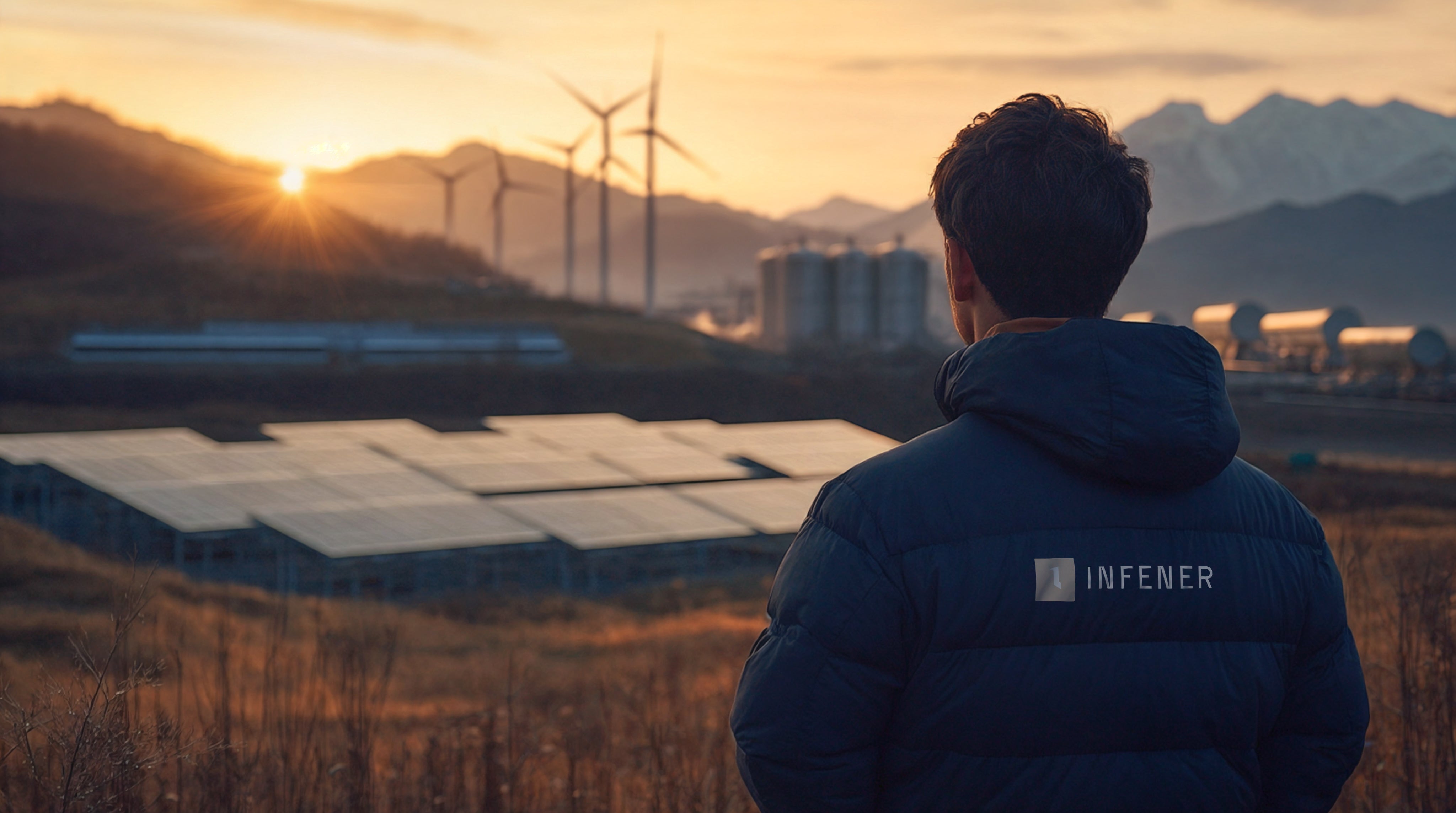
From Vision to Reality: Scaling Green Hydrogen Production in Germany
Hydrogen is widely regarded as a key energy carrier of the future, prompting Germany and the EU to set ambitious targets for its expansion. However, political uncertainties and a lack of regulatory clarity are hindering investments in the hydrogen ramp-up. Joel Vogl, CEO and Co-Founder of Infener, calls for targeted measures to accelerate the transition towards a decentralised, self-sufficient, and CO₂-neutral energy future powered by green hydrogen.
Decentralised, climate-friendly hydrogen solutions not onlyreduce CO₂ emissions in industry and transport but also strengthenenergysovereignty and regional valuecreation in Germany and Europe. Yet, theimplementationof hydrogen projectshaslaggedsignificantlybehindplans: in the EU, lessthan 0.5 GW of planned hydrogen projectshavereached final investmentdecisions—a fractionoftheambitioustargetof 40 GW by 2030.
Policy action 1: Establish Market-Ready Pricing for Green Hydrogen
To become economically viable, green hydrogen requires a comprehensive strategy, including:
- Green Gas Quotas: Introducing mandatory minimum quotas for green hydrogen in industry, transport, and heating will stabilise demand and provide planning certainty. Prioritising locally produced, certified hydrogen can further enhance regional value creation.
- Carbon Pricing & GHG Quotas: A higher carbon price will make fossil fuels less attractive and support the competitiveness of zero-emission alternatives. Concurrently, a stable and long-term greenhouse gas (GHG) quota should enable green hydrogen producers to benefit from certificate revenues. Together, these measures will reduce production costs and foster competitiveness.
- Contracts for Difference (CfD): This mechanism ensures planning reliability by covering revenue shortfalls through state support, particularly vital in times of fluctuating electricity prices.
Achieving market-ready green hydrogen necessitates a coordinated set of measures, from green gas quotas to long-term offtake agreements. Effective instruments must create certainty for investors and producers alike. The state must establish reliable frameworks to underpin a competitive green hydrogen market.
Policy action 2: Leverage Decentralised H2 Hubs as Energy Storage Solutions
To make the energy transition more efficient, hydrogen production must serve the needs of the energy system. Decentralised hydrogen hubs can not only produce green hydrogen efficiently but also act as flexible storage solutions for surplus renewable energy. In Germany, around 11 TWh of excess electricity is wasted annually, leading to significant redispatch costs (source: BMWK). Infener’s hybrid systems combine hydrogen for long-term storage with batteries for short-term storage, addressing these challenges effectively.
Targeted funding is essential to achieve the 10 GW electrolysis capacity goal by 2030. Auctions for system-serving electrolysers under Section 96 No. 9 of the Offshore Wind Energy Act provide a promising pathway, and the planned federal funding directive is a welcome step. Additionally, further incentives such as reduced grid fees are needed to ensure the economic viability of these facilities.
Equally crucial is a stable regulatory framework that provides investment security for banks and investors—akin to the incentives that the Renewable Energy Sources Act (EEG) offered in the early days of wind and solar parks. Such a framework would grant projects the necessary planning security and accelerate the hydrogen ramp-up.
Through a combination of technical flexibility, economic incentives, and financial confidence, hydrogen hubs can support grid stability while enhancing regional value creation and energy security.
Green Hydrogen: Building Industrial Resilience
Infener champions decentralised green hydrogen production that operates independently of, and in complement to, centralised core grids, harnessing local renewable energy sources. These approaches not only offer greater flexibility but are also vital for ensuring supply security and a resilient energy infrastructure. Recent studies by the Wuppertal Institute and Fraunhofer IAO affirm that decentralised solutions significantly reduce import dependence and enhance supply security. A sustainable, secure, and cost-effective energy supply can only be achieved through a blend of centralised and decentralised technologies.
Now is the time to lay the groundwork for a sustainable, decentralised energy future that prioritises local production. Decentralised green hydrogen production can serve as a blueprint for scaling core grids and larger-scale imports in the future. Only through decisive action can the full potential of green hydrogen be realised, securing Germany’s leadership in the energy sector.
